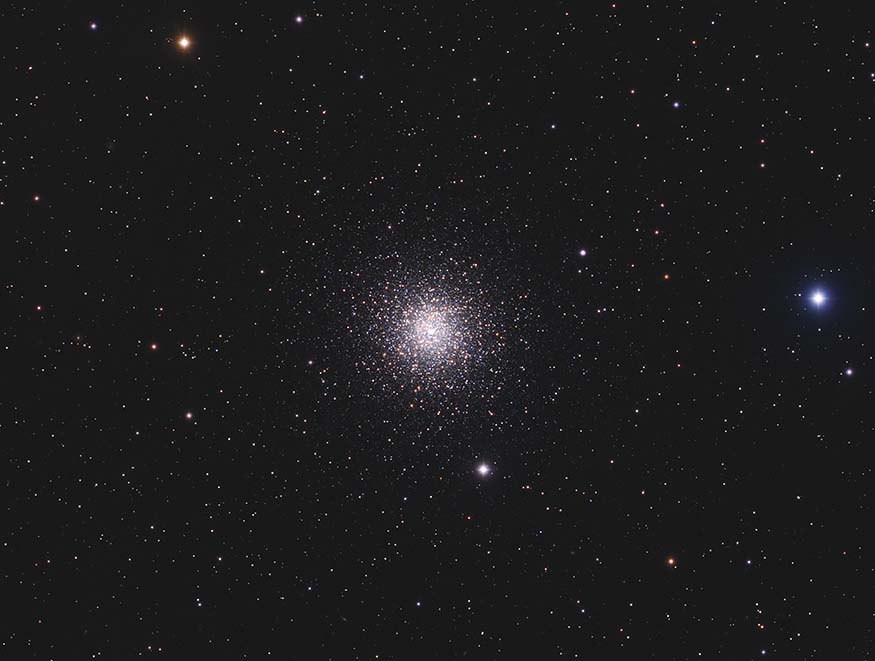
BEAUTY:  BRAGGING RIGHTS: A beautiful sight
BRAGGING RIGHTS: A beautiful sight
HOW EASY IS IT TO SEE? Best with small telescope
BEST TIME TO SEE IT: Fall (in Pegasus)
TYPE: Globular Cluster
DISCOVERED: 1746, Jean-Dominique Maraldi II
Collapsed core. To blast a satellite into orbit you need to give it lots of kinetic energy, usually by putting on top of a rocket. The greater the speed, the higher the satellite can go. The stars in a globular cluster are all orbiting with enough energy to keep them buzzing around like bees. But sometimes, those orbits can decay. In that case, the stars fall toward the center of the cluster, clumping together. This is known as a collapsed core, and Messier 15 is a perfect example of this. In fact, M15 is one of the densest clusters known—thousands of stars are packed into a few cubic light-years. Look for M15 about 4 degrees west-northwest of Epsilon Pegasi. M15’s bright but small core is visible with binoculars, but you’ll need a telescope at moderate power to resolve its outlying stars. Even then, you’ll need a large telescope to spot the core.